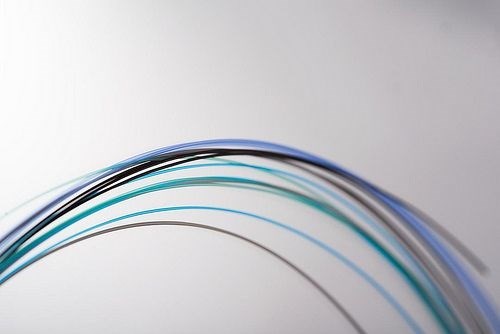Advanced Tri-Layer Tubing for Balloon Catheters
Putnam Plastics’ proprietary extrusion process produces tri-layer tubing with improved tensile, burst and elongation properties.
To keep up with evolving requirements of medical catheters and devices, Dayville, Conn., has developed an advanced tri-layer tubing technology that boasts significantly improved tensile and burst strength, while reducing elongation. Made with a proprietary extrusion process, the company’s new Super-Tri tubing aids in the prevention of wire lock-up in catheters where guidewires are used.
According to Putnam Plastics, a leader in advanced extrusions and components for minimally invasive medical devices, the Super-Tri technology utilizes the same material combination as traditional tri-layer tubing while providing superior performance characteristics. Often used in PTCA (percutaneous transluminal coronary angioplasty) delivery systems, tri-layer tubing typically involves a HDPE inner layer for lubricity, a proprietary middle layer for bonding, and a nylon outer layer—a construction that provides a unique combination of strength, trackability and bondability.
The new tubing is said to assist in issues that have evolved from the development of higher rated burst pressure balloon catheters. Super-Tri tubing has a 98% higher burst strength and a 750% lower elongation, compared to traditional tri-layer tubing, making it very well suited for catheters that require high-pressure balloons.
The significant elongation reduction and increased tensile strength decrease the potential for guidewire lock-up, according to the company. Says Bill Appling, dir. of engineering and assembly, “For example, a PTCA inner member where tri-layer tubing is most commonly used can now be produced with a 130% improvement in ultimate tensile strength, and 170% increase in tensile strength at yield. This product provides new options in the design of catheters for the next generation of devices where strength and size are critical.” The Super-Tri tubing technology meets the same sizing, tolerances, and material configurations as traditional tri-layer tubing.

Related Content
-
NPE2024 Wrap-Up: Sustainability Dominates Show Floor News
Across all process types, sustainability was a big theme at NPE2024. But there was plenty to see in automation and artificial intelligence as well.
-
The Importance of Barrel Heat and Melt Temperature
Barrel temperature may impact melting in the case of very small extruders running very slowly. Otherwise, melting is mainly the result of shear heating of the polymer.
-
Medical Tubing: Use Simulation to Troubleshoot, Optimize Processing & Dies
Extrusion simulations can be useful in anticipating issues and running “what-if” scenarios to size extruders and design dies for extrusion projects. It should be used at early stages of any project to avoid trial and error and remaking tooling.






